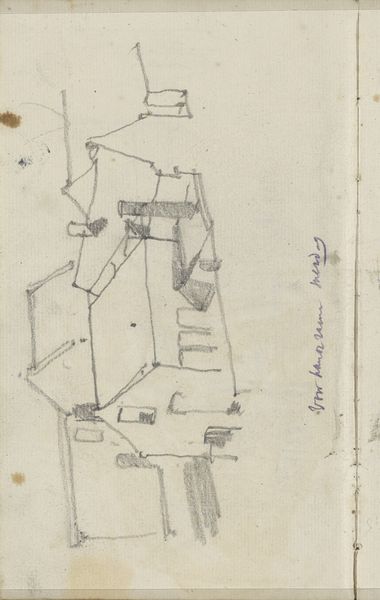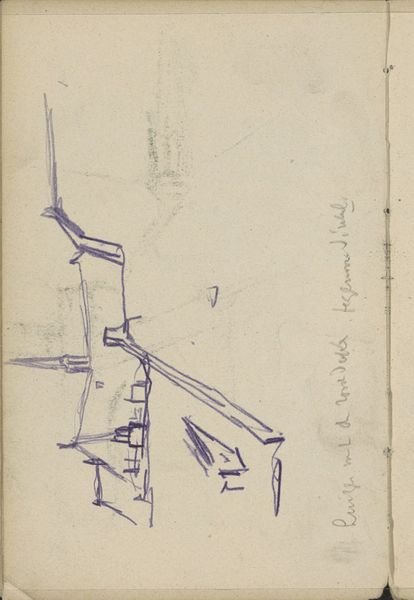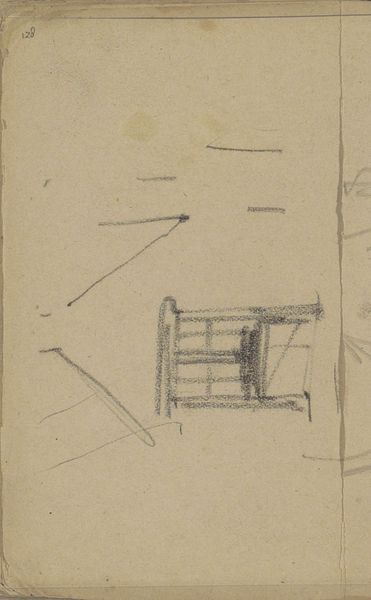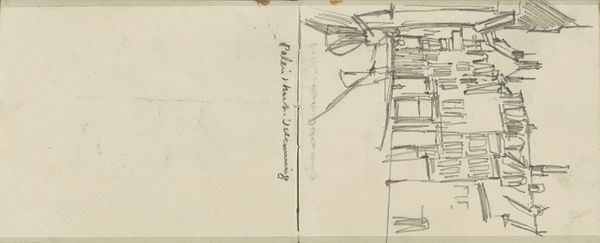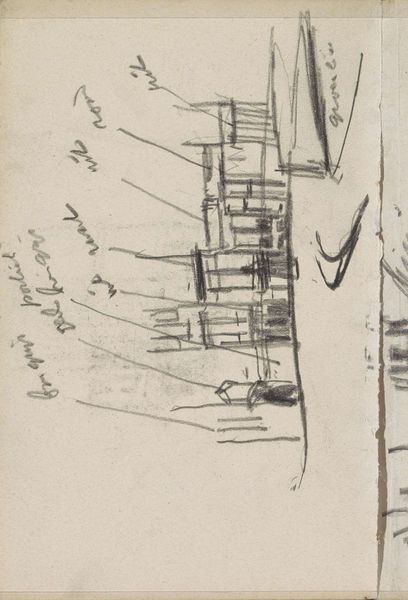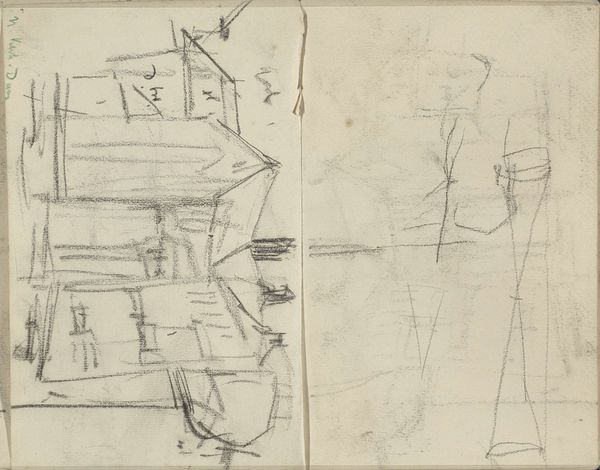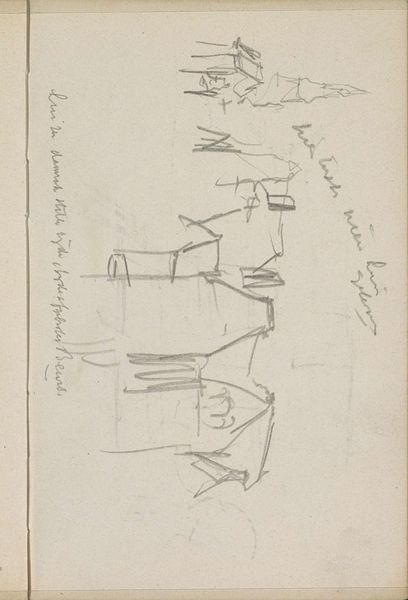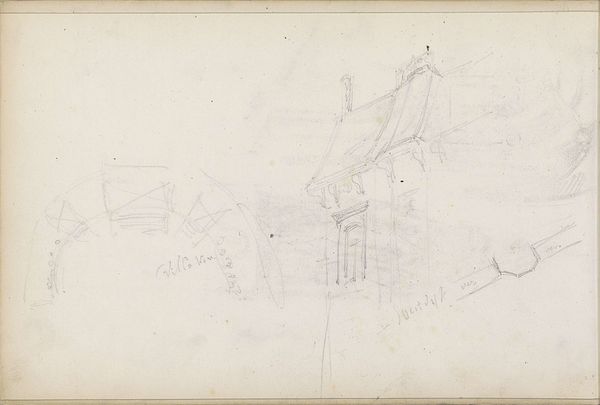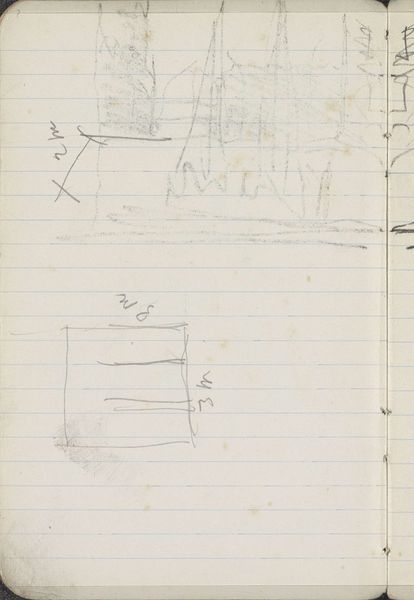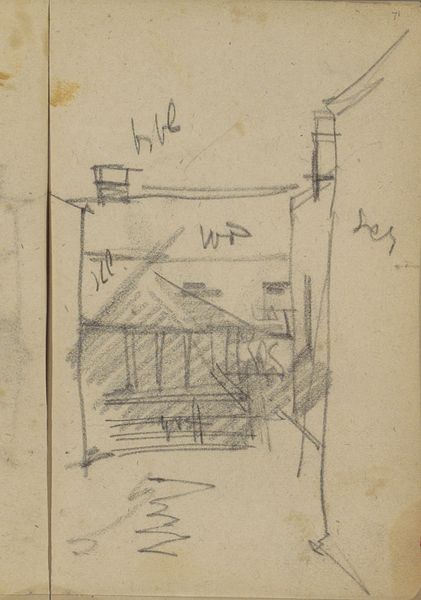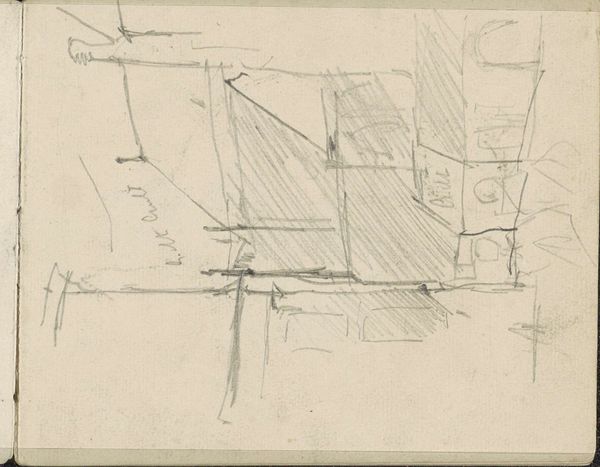
Copyright: Rijks Museum: Open Domain
Curator: This sketchbook page, titled "Gebouwen" or "Buildings", captures the fleeting essence of architecture through the hand of George Hendrik Breitner. Executed in pencil, it dates back to somewhere between 1885 and 1898. The Rijksmuseum is fortunate to have it in their collection. Editor: There's a sense of looking through time, as if I am peering at the ghostly architectural presences through the pencil lines of a forgotten city, maybe Breitner's Amsterdam in transition, before it entirely became what we know now. Curator: Indeed, Breitner was fascinated with urban scenes. He strived to capture the dynamism of modern life, of capturing a momentary scene. Editor: I think I see some potent symbols within these sketchy buildings. The use of geometric forms and lines evokes the rational world—the order humans impose upon nature. Each structure is also different—an echo, perhaps, of individuality versus the growing uniformity of cities, and our inner world within them. Does that resonate with your interpretation? Curator: That's an intriguing suggestion. To me it has always felt like Breitner was concerned with the transient effects of light and atmosphere—not unlike his contemporaries who painted impressionistic landscapes and figures, capturing those qualities, those sensory responses over symbolic values. The hasty notations reinforce the immediacy, as does the raw energy conveyed through the visible pencil strokes. It reads like a fleeting visual note. Editor: So even in this ostensibly impersonal subject matter, there's a highly personal voice. He reduces them to line, he brings forth their presence by recording shadows, volume and planes; and it's very emotionally communicative of the feelings these urban spaces evoked in him at that moment. We are brought back to experience those emotions. It's quite an impressive piece of observation. Curator: Breitner would surely approve that our journey here has led to such diverse viewpoints—one leaning toward intuition and emotions, the other toward signs and symbolism. He lived and worked outside rigid stylistic borders—so perhaps it’s a way of honoring his vision.
Comments
No comments
Be the first to comment and join the conversation on the ultimate creative platform.
